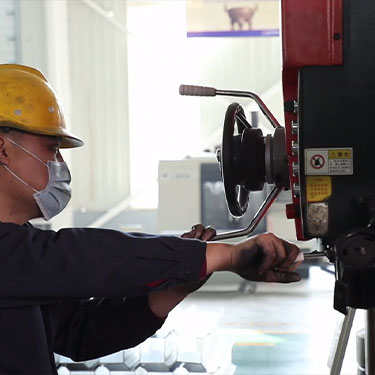
Dec . 25, 2024 20:10
Back to list
high pressure regulators
Understanding High Pressure Regulators
High pressure regulators play a crucial role in various industrial applications where controlling gas or fluid pressure is essential for safety and efficiency. These devices are designed to manage and reduce the pressure of an incoming gas or liquid to a desired level, ensuring that systems operate within their specified pressure limits. This article will explore the functionality, types, applications, and importance of high pressure regulators in various industries.
Functionality of High Pressure Regulators
High pressure regulators work by accepting pressurized gas or liquid from a source and reducing it to a lower, controlled output pressure. The regulator uses a mechanical mechanism, which often includes a diaphragm and a spring, to maintain the output pressure despite fluctuations in the supply pressure or changes in the flow rate. The basic operation involves sensing the output pressure and adjusting the valve position accordingly to ensure a consistent pressure downstream.
The performance of a high pressure regulator can be influenced by factors like the design of the regulator, the materials used, and the specific application requirements. Many regulators are equipped with features such as vents, gauges, and safety mechanisms to provide feedback and enhance performance.
Types of High Pressure Regulators
There are several types of high pressure regulators, each designed for specific applications
1. Single-Stage Regulators Suitable for applications where the pressure drop is not substantial, single-stage regulators provide quick response times and are simpler in design.
2. Two-Stage Regulators These regulators are ideal for applications that involve wider pressure fluctuations. They reduce the pressure in two stages, offering better stability and accuracy in maintaining output pressure.
3. Electronic Regulators With advancements in technology, electronic pressure regulators have emerged. They utilize sensors and electronic controls to provide precise pressure management, often integrated with monitoring systems for real-time adjustments.
4. Specialized Regulators Certain industries or applications may require specialized regulators tailored for specific gases (like oxygen or acetylene) or environments (such as high purity or corrosive conditions).
Applications of High Pressure Regulators
high pressure regulators

High pressure regulators find extensive usage across various sectors, including
- Industrial Manufacturing In chemical processing and manufacturing plants, high pressure regulators help manage gases used in reactions, ensuring the right pressure for optimal performance.
- Gas Distribution In the natural gas and propane industries, these regulators are crucial for maintaining safe operating pressures in pipelines and distribution systems.
- Medical Gas Supply In healthcare, regulators are essential for controlling the delivery of gases like oxygen and nitrous oxide to patients, ensuring safe and effective treatment.
- Welding and Fabrication For welding applications, regulators control the flow of shielding gases, enhancing weld quality and safety.
- Research Laboratories High precision regulators are often used in laboratories to maintain controlled conditions for experiments, particularly when dealing with sensitive materials.
Importance of High Pressure Regulators
The importance of high pressure regulators cannot be overstated. They serve not only to protect equipment and systems from potential pressure surges or drops but also to ensure the safety of personnel by preventing leaks and malfunctions. In industries where pressure control is critical, the reliability of a high pressure regulator directly impacts production efficiency and quality.
Moreover, effective pressure regulation contributes to energy savings by optimizing system performance. For instance, in gas distribution, properly regulated systems can minimize waste and reduce costs, ultimately benefiting both the provider and the consumers.
Conclusion
In summary, high pressure regulators are vital components in managing and controlling pressures in various industrial applications. By understanding their functionality, types, and applications, industries can ensure better safety, efficiency, and reliability in their operations. As technology continues to advance, the development of more sophisticated and precise pressure regulation solutions will undoubtedly play a key role in the future of industrial processes.
Latest news
-
Safety Valve Spring-Loaded Design Overpressure ProtectionNewsJul.25,2025
-
Precision Voltage Regulator AC5 Accuracy Grade PerformanceNewsJul.25,2025
-
Natural Gas Pressure Regulating Skid Industrial Pipeline ApplicationsNewsJul.25,2025
-
Natural Gas Filter Stainless Steel Mesh Element DesignNewsJul.25,2025
-
Gas Pressure Regulator Valve Direct-Acting Spring-Loaded DesignNewsJul.25,2025
-
Decompression Equipment Multi-Stage Heat Exchange System DesignNewsJul.25,2025

